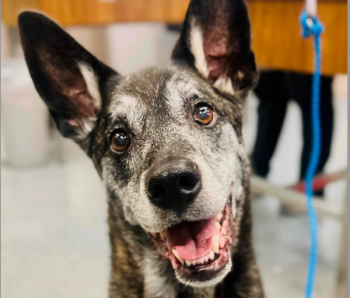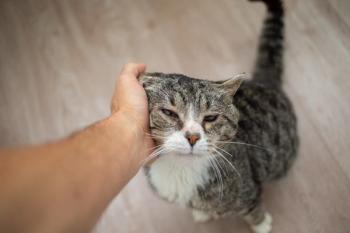- dvm360 April 2021
- Volume 54
Fundamental shifts in consumer behavior: What’s next?
Economic trends propelled by the pandemic have placed veterinary practices in a good position for success, but now is not the time for complacency.
Consumer behavior looks vastly different today than it did before the start of the coronavirus disease 2019 (COVID-19) pandemic. Although we can’t be certain how long these changes will last—or whether they are here to stay—the success of veterinary practices hinges on our ability to continue evaluating and adapting our business models to meet shifting consumer needs. Fortunately, we have data that help us understand how our economy has changed during the pandemic and how the changes have driven client needs and preferences.
Slow recovery across the board
Consumer spending is slowly rising across the nation, spurred by the distribution of stimulus payments from the federal government and progress in COVID-19 vaccinations. Still, consumer habits remain volatile. Foot traffic has dropped dramatically since the onset of the pandemic. There is positive movement toward recovery, but we have yet to reach prepandemic levels. Consumer confidence also took a big hit over a short period of time, and economists expect a slow recovery.
As of January 2021, employment rates were 7.2% lower than a year earlier, and the divide between high- and low-wage workers continues to grow. In terms of revenue impacts, small businesses are hurting the most, with revenue 30% lower than prepandemic levels on average.
Faster upswing in veterinary medicine
The veterinary profession has reason to be cautiously optimistic. At the start of the pandemic, practice revenue dipped 20% (year over year) nationwide. That returned to positive revenue growth nationwide in early May 2020, although not all areas and practices saw the same results. Currently, practice revenue nationally is higher than it was before COVID-19, thanks to a variety of factors. These include new pet adoptions, a surge in pent-up demand after early lockdowns, new disposable income from stimulus payments, and closer attention being paid to pets by owners spending more time at home.
Fundamental consumer shifts and how to harness them
Changes to our economy are driving a new consumer paradigm, embodied in 4 fundamental shifts in behavior, according to a recent report by McKinsey & Company.1
Heightened sense of value and frugality
Four in 10 Americans believe their finances will not return to normal before the latter half of 2021 or 2022. The same proportion say they’re being more mindful of how they spend their money and focusing on essentials.
Price isn’t the only factor for veterinary clients, or even the most important one, when it comes to patient care. But affordability is a top priority, and we must be able to offer competitive prices on the products our clients are looking for. At the same time, it’s more important than ever to communicate to clients the full, tangible value of the services we provide, especially wellness care.
Flight to digital and omnichannel
Consumers continue to shift to online shopping across the categories, and veterinary medicine is no exception. Here’s something to consider: Although overall consumer spending has fallen during the pandemic, e-commerce expenditures have grown at epic rates.
Practices need an online presence beyond the business webpage. If you haven’t already adopted a digital platform to sell and provide home delivery of medications, food, and other products, that could be a good place to start. Also consider ramping up digital communication, including email and social media, because that’s where consumers are spending an increasing amount of their time.
Willingness to switch to brand loyalty
With continued pressure on income, consumers are trying out new brands and channels. Primarily, they’re looking for convenience and better value, and they’ll try any number of companies to find the best option at any given moment.
Here, forward thinking and creativity are key. We have to be adaptable, flexible, and agile. Customer loyalty is no longer a certainty, so we must stay highly attuned to our clients’ wants and needs (value and convenience). This is especially important as we focus on cultivating the types of authentic relationships that lead to client retention and growth.
Establishing a homebody economy
The majority of people have not resumed “normal” out-of-home activities, and the home has been recast as the new office, school, and coffee shop. The lines are blurred between labor, leisure, and learning, and will remain so for some time.
We must rethink how and where we connect with clients and provide patient care. We could be bouncing between periods of lockdown and transition for the next 6 to 24 months. How our clients experience veterinary care during this time is going to have a lasting impact.
Keeping a pulse on practice trends
Being attuned to economic changes is vital for practices to make informed business decisions and stay competitive. Practice owners and managers who keep an eye on economic indicators beyond their own practice can get a leg up, spotting trends and patterns that provide foresight into what might be coming next.
This is an area where you can lean on the American Veterinary Medical Association (AVMA) for help. The practice management tools on our website include interactive dashboards with veterinary benchmark and tracking data, and you can sign up to have a practical summary of those trends sent to your inbox every month.
One example is the new Veterinary Industry Tracker(avma.org/IndustryTracker), an interactive dashboard that provides 24/7 access for practice owners to monitor business activity across the profession and get benchmarks for comparison with their own practices. Collecting data from thousands of veterinary practices nationwide, the tracker shows revenue and visits per practice, year-over-year comparisons, service and product revenues, and much more, all updated daily. The tool is a result of a partnership between AVMA and VetSuccess.
Practice Pulse, AVMA’s free monthly newsletter, puts the data to practical use, providing actionable tips and advice to guide veterinary decision-making and support business strategy. Subscribe on the economics section of the AVMA website (avma.org/VeterinaryEconomics).
Matthew Salois, PhD, is director of the AVMA Economics Division.
Reference
- Survey: US consumer sentiment during the coronavirus crisis. McKinsey & Company. December 8, 2020. Accessed March 10, 2021. https://www.mckinsey.com/business-functions/marketing-and-sales/our-insights/survey-us-consumer-sentiment-during-the-coronavirus-crisis#
Articles in this issue
over 4 years ago
Diagnosis and management of IBD in dogs and catsover 4 years ago
Light it up: Laser surgery in veterinary medicineover 4 years ago
COVID-19 and animals: Then and nowover 4 years ago
COVID-19 vaccination offers hope for a brighter tomorrowover 4 years ago
Why you should say “yes” to wellness plansover 4 years ago
Grandmothers can make some strange noisesover 4 years ago
BI introduces Pawru for tech-enabled collaborative pet careover 4 years ago
Pros and cons of selling to a corporationNewsletter
From exam room tips to practice management insights, get trusted veterinary news delivered straight to your inbox—subscribe to dvm360.







